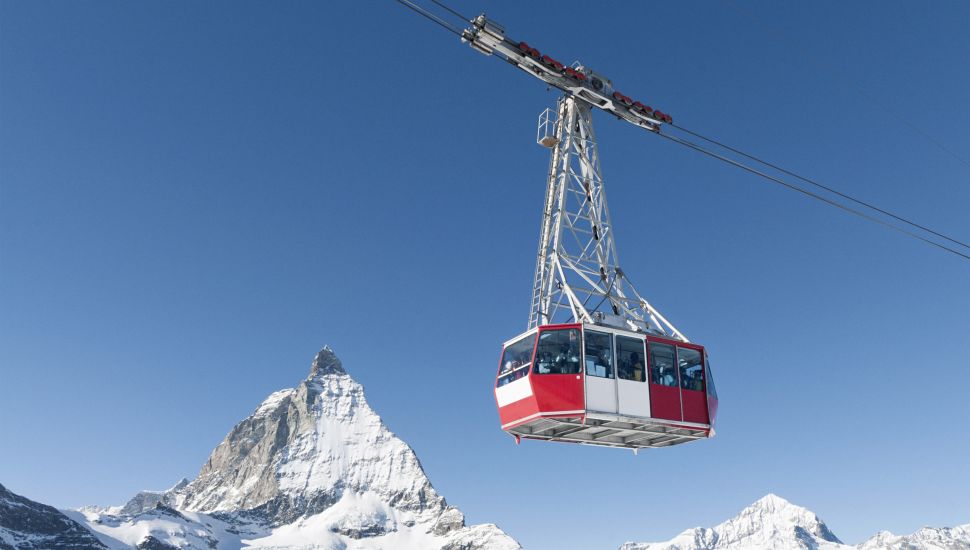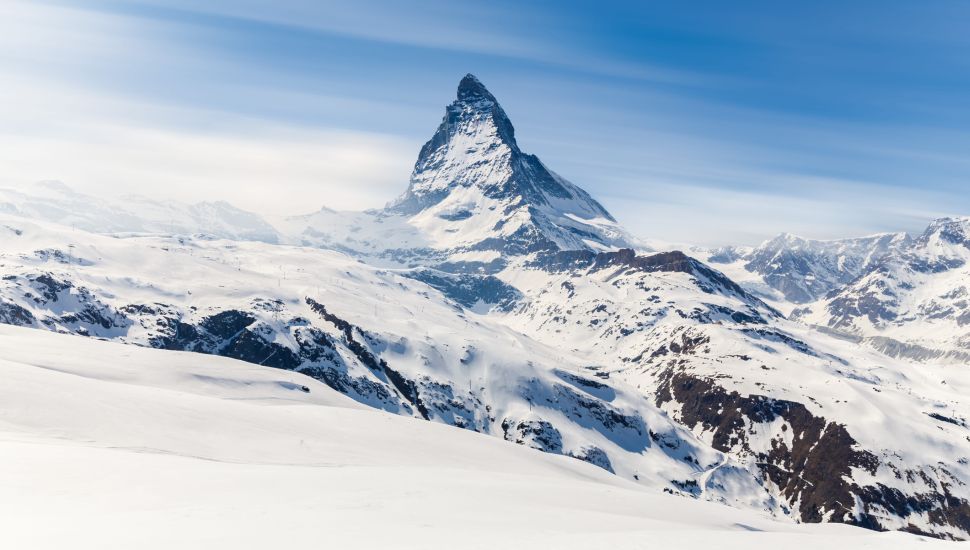Zermatt: Switzerland’s Matterhorn Paradise - Our Guide
Zermatt is your base for skiing and climbing near the mighty Matterhorn, where the great - and even greater - come to spend their abundant resources in true Alpine fashion.
After some days in Zermatt, it's not clear if the majestic Matterhorn (4478m) is being watched by you, or you by it. Certainly it seems to be the former when this monolithic beauty looms into view for the first time - invariably during a train or taxi journey from Täsch. But as your days in this quintessential Swiss town proceed, it feels as if this mighty shard of rock is keeping careful watch over you - but in a benevolent kind of way.
And yet, the first man to climb the Matterhorn, Edward Whymper, may not have perceived the mountain as benevolent, after most of his group were lost on a fateful summer day in 1865. His ascent marked the end of the golden age of alpinism and yet the Matterhorn - and the town of Zermatt - retain a legendary quality to this very day.
Now, Zermatt itself seems a world away from the realm of rugged 19th century climbers. Today's residents are usually of the well-heeled variety, donning haute couture labels in the town's chic bars and eateries. But that's not to say there isn't some strenuous outdoor activity going on nearby: skiing, snowboarding, climbing and hiking are still the main outdoor pastimes - and with the mystifying grandeur of the Matterhorn in the background - there's no better place to indulge them.
When to visit
If you're visiting for skiing, snowboarding or winter hiking, aim for between the end of November and the middle of April. For a summer holiday of climbing and hiking, arrive between the end of June and the start of October.
The season starts in earnest by November's close, when real or artificial snow have ensured that all three ski areas are open for business. In December, the Zermatt Fashion event is the main draw, followed by Christmas. This is a wonderful time to visit, but it can get crowded and hotel prices sky rocket. January is quieter and colder still, while February is brighter and the terraces start to fill up once more.
Skiing in Zermatt

iStock/georgeclerk
There are four ski areas near Zermatt: Sunnegga, Gornergrat, Klein Matterhorn and Schwarzsee. Sunnegga and Gornergrat are accessible by the SunneggaExpress funicular railway and the Gornergrat railway respectively, in addition to gondolas and cable cars. Klein Matterhorn and Schwarzsee are accessed by gondolas and cable cars.
Sunnegga, with its gentle slopes, is ideal for beginners and younger skiers, while Gornergrat, Klein Matterhorn and Schwarzsee cater to more experienced skiers.
Summer skiing
At higher altitudes, skiing continues into the summer. Winter sports lovers and summertime hikers share the slopes in harmony, with green, idyllic Alpine meadows in the valley and wintry weather up on the Theodul Glacier. In all, you can ski or snowboard 21 kilometres of slopes in mid-summer.
Ski lift passes for Zermatt

iStock/pathara
A day ticket ranges in price from CHF58 to CHF69 (£46 - £55), with a six day pass costing between CHF296 and CHF357 (£236 - £284). Discounts are available for under-8s and under-20s.
Zermatt for non-skiers
You don't have to be a skier or a snowboarder to enjoy Zermatt. Arrive in June or July when the wild meadow flowers are at their finest and you can enjoy hiking and climbing, or simply lounging around with affluent Swiss and German visitors.
Getting to Zermatt
You'll most likely fly into Zurich-Kloten or Geneva-Cointrin, then hop on the train to Zermatt, which takes three-and-a-half and four hours respectively. If you're already in Switzerland, you can drive to Täsch, then park up and take the train (12 minutes) to Zermatt, where private cars are not allowed. You can also arrive by taxi - or even helicopter - but the train is by far the most economical.
Getting around Zermatt
Nothing in Zermatt takes more than 30 minutes to reach by foot. This pedestrian-centric town is all the more laid back for being car free - making it a more relaxing and safe place to take the kids. If you really need four-wheeled transport, you can hop on an electric bus, or take a taxi.
Things to do in Zermatt
Understandably, skiing and snowboarding are main draws in Zermatt, followed closely by the town's lively apres ski scene. However, the Matterhorn Museum - Zermatlantis, will absorb you for a few hours. This subterranean museum documents the history of the Zermatt area, featuring a number of well-designed interactive exhibits. There are also a number of interesting walks, including the Village Tour and the 5-Seenweg (Five Lakes Walk).
Eating and drinking

The cuisine in Zermatt is of the highest quality - with prices to match. Budget meals in Zermatt are a rarity, aside from buying a hunk of cheese and some bread in the local convenience store. Indeed, there are two Michelin-starred restaurants here and 17 boasting Gault Millau points.
Having psychologically prepared yourself to spend a lot of money, you might try the very sophisticated cuisine of Capri - a Michelin-starred eatery in Mont Cervin Palace hotel. During the day, you might visit Chez Vrony with its sunny terrace and wondrous mountain views. Try their burger in sesame seed buns, or rosti with eggs and bacon: down-to-earth Swiss food for an astronomical Swiss price.
Accommodation
January hotel prices are among the highest of the year, ranging from around £150 for a mid-range, to £300+ for a four-star. That said, there are a few cheaper hotels, such as the well-reviewed Swiss Budget Alpenhotel, a 3-star hotel costing around £75 per night in January.
Visit in May and few hotels cost more than £200, with many available for around £80 a night.
Adhering to world famous Swiss standards, the vast majority of Zermatt hotels are of the highest quality, with first-rate amenities and friendly staff.
There are also a few hostels, such as the The Matterhorn Hostel Zermatt (around £28 for a dorm bed), whose austere demeanour may seem a lot worse given the salubrious establishments that surround it.
Get a Quote